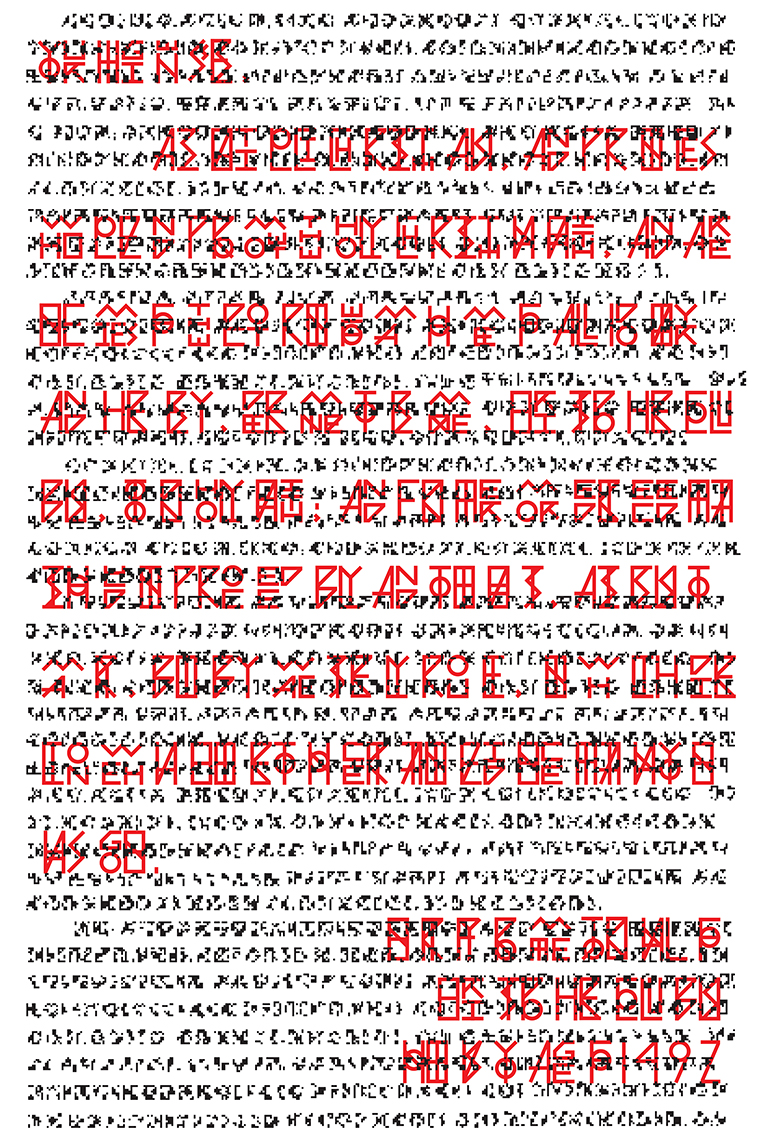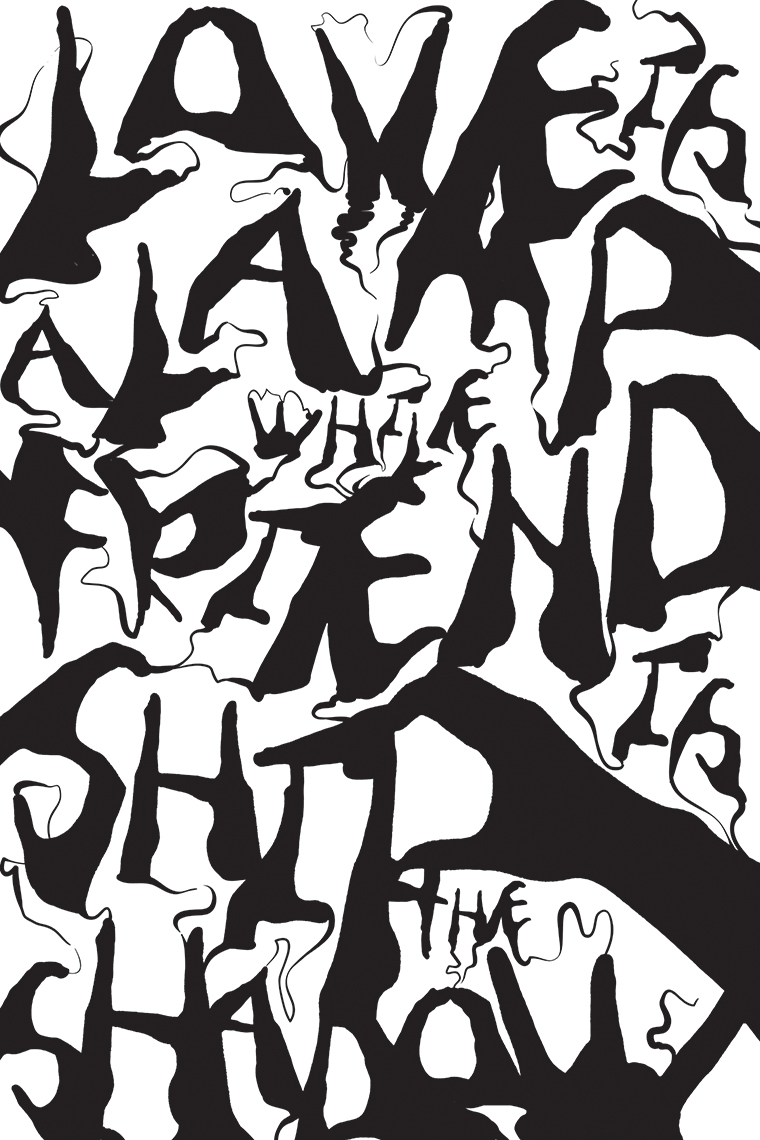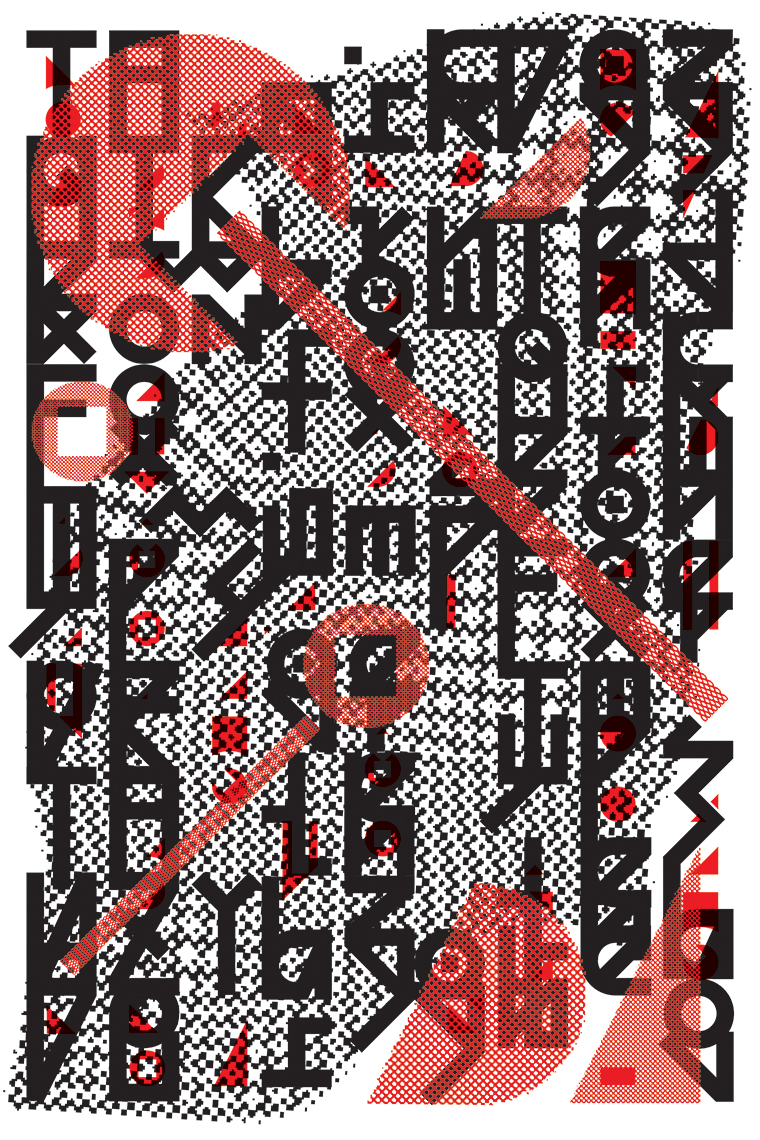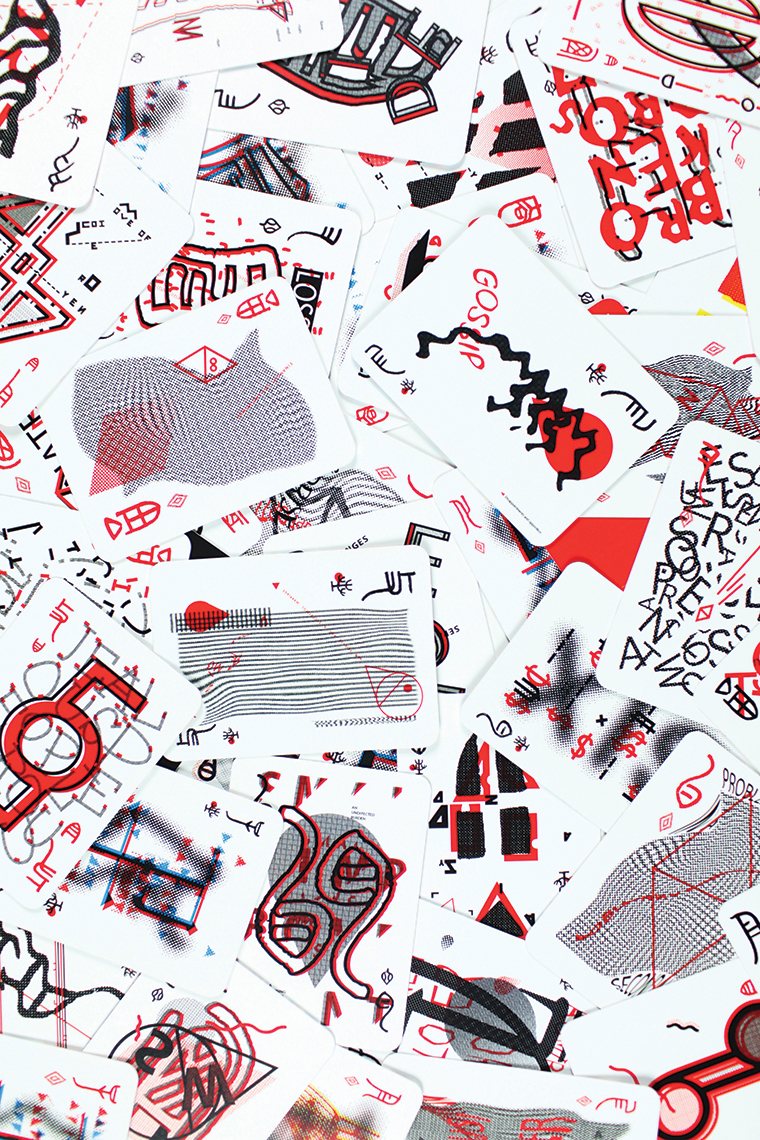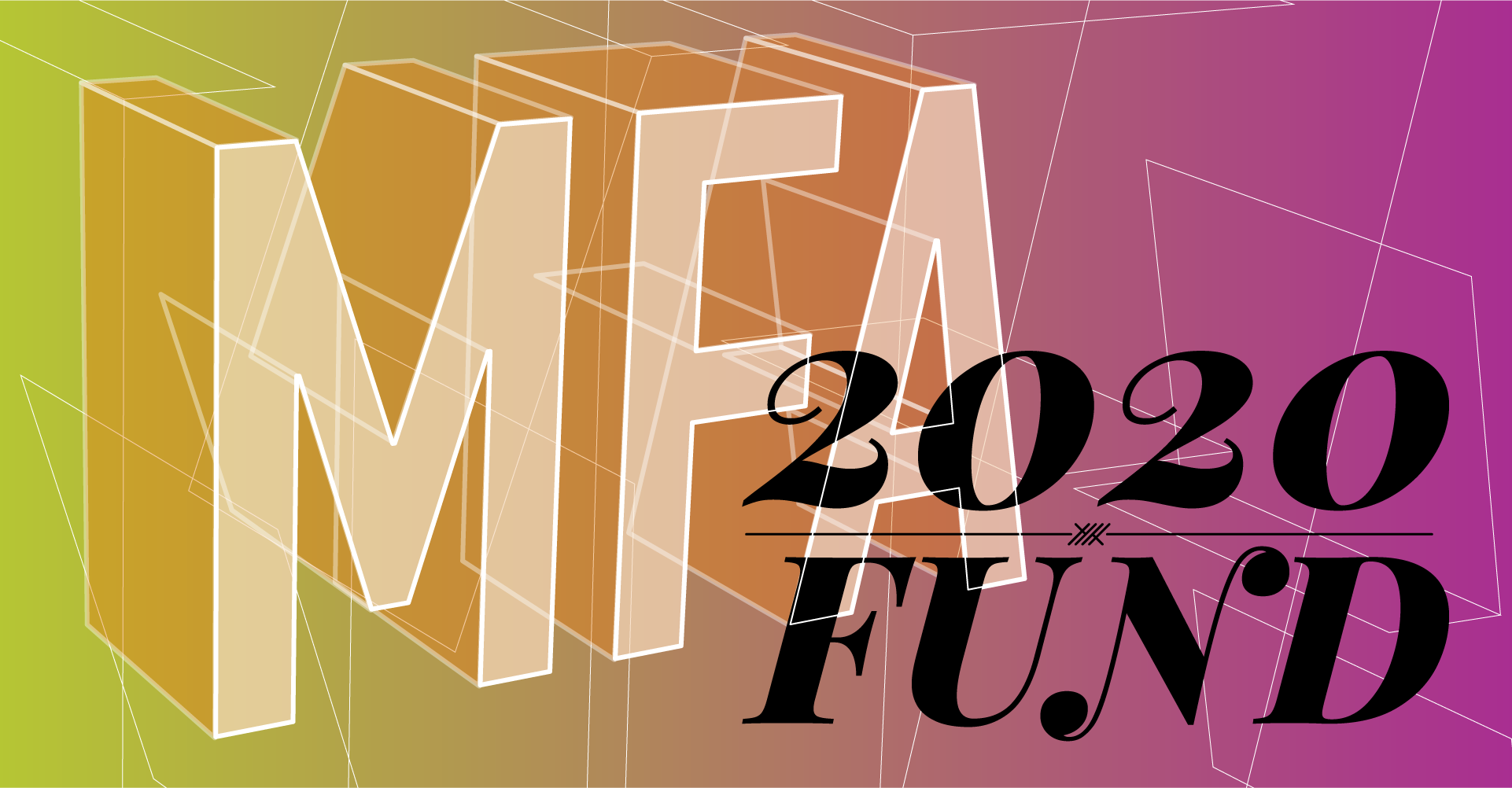Since I came to the United States, the enormous cultural distinctions I faced used to confuse me both in my daily life and my learning processes. This is especially evident in the written characters of a language, which are the most typical features for a culture. My work in this exhibition examines a Chinese graphic designer’s interpretation of the relation between two languages, which is the restructuring of both the character and the cultural amalgamation of them.
The modern Chinese and English languages both originated from pictography thousands of years ago; however, the evolved direction was in completely opposite directions. Chinese characters became more intricate and generated several kinds of structures. English characters concentrated down to 26 letters and followed one specific component rule, from left to right. Hence, this distinction comes into being through two visual perceptions, the dense punctuation array of Chinese characters, and the loose stripe array of English. Meanwhile, these forms followed the sequence from small to big, from singularity to a collective, both can be disassembled in a procedure, which involves the stroke, component, character, word, sentence and paragraph in the language. Therefore, based on the differences and the similarities, this group of typographic pieces explores the various built-up effects of 26 English letters in conjoined with different formats of Chinese characters, which generates a new typographic system that can be interpreted through the two languages.
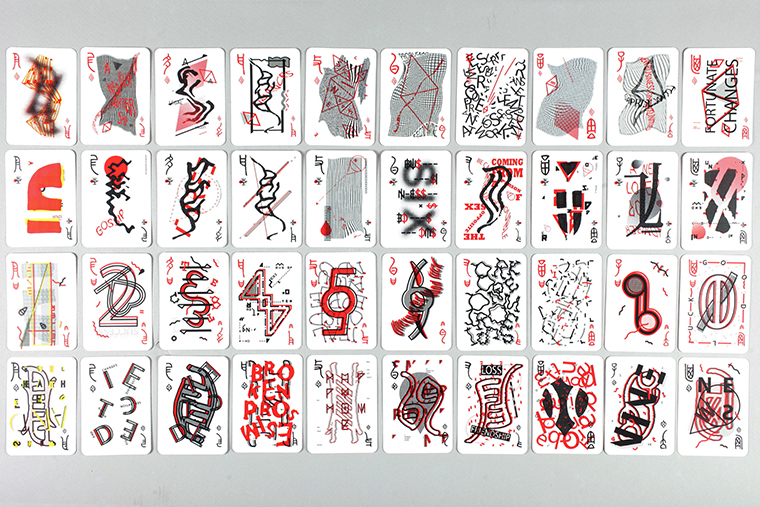
Xuancheng Zhang '14
